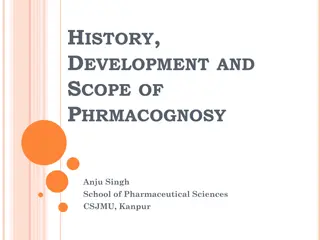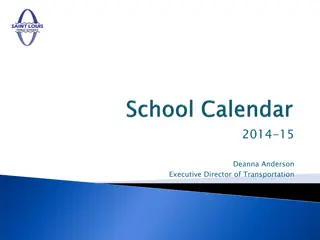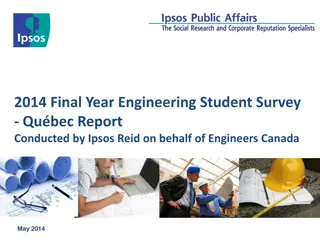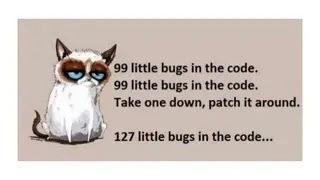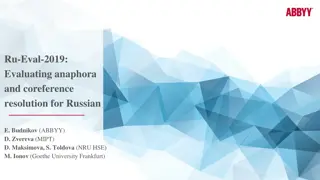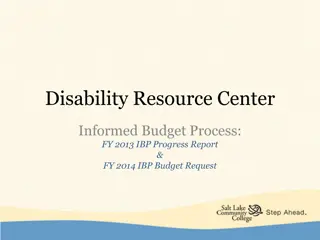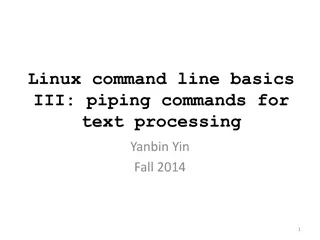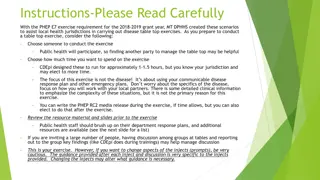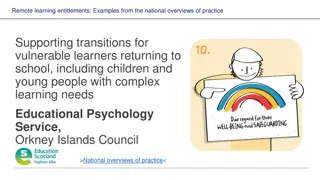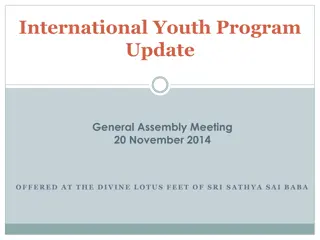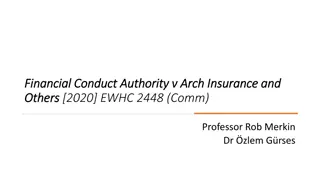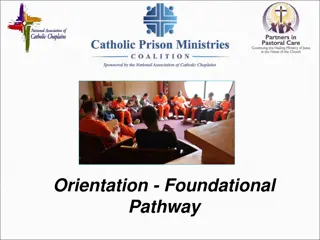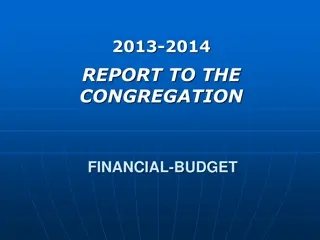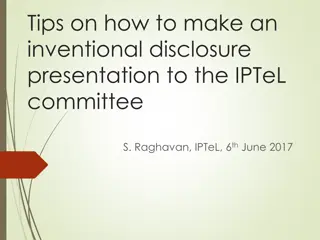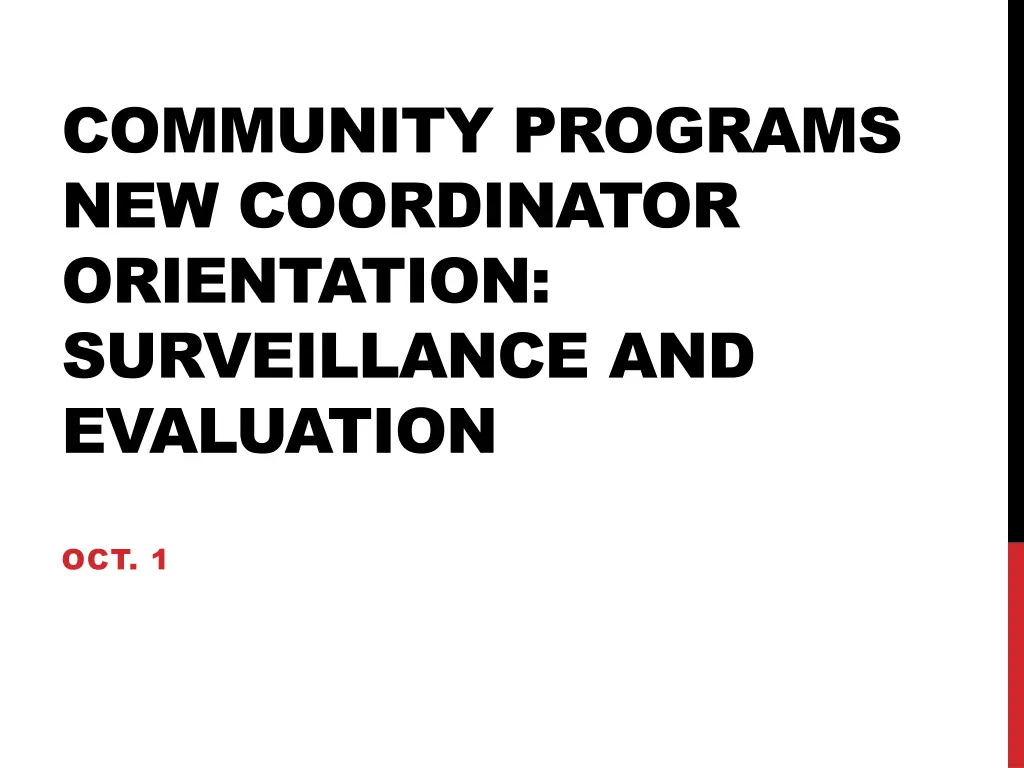
Effective Surveillance and Evaluation Practices for Community Programs
Explore the importance of surveillance and evaluation in public health initiatives with insights from experts. Learn about data collection sources, tools, and resources for monitoring health trends at the county and state levels in Oregon.
Download Presentation

Please find below an Image/Link to download the presentation.
The content on the website is provided AS IS for your information and personal use only. It may not be sold, licensed, or shared on other websites without obtaining consent from the author. If you encounter any issues during the download, it is possible that the publisher has removed the file from their server.
You are allowed to download the files provided on this website for personal or commercial use, subject to the condition that they are used lawfully. All files are the property of their respective owners.
The content on the website is provided AS IS for your information and personal use only. It may not be sold, licensed, or shared on other websites without obtaining consent from the author.
E N D
Presentation Transcript
COMMUNITY PROGRAMS NEW COORDINATOR ORIENTATION: SURVEILLANCE AND EVALUATION OCT. 1
Stacey Schubert, Surveillance and Evaluation Manager Shaun Parkman, Evaluation Specialist
SURVEILLANCE DEFINED SURVEILLANCE1is the ongoing, systematic collection, analysis, and interpretation of health data, essential to the planning, implementation and evaluation of public health practice, closely integrated with the dissemination of these data to those who need to know and linked to prevention and control. 1Centers for Disease Control and Prevention. Lexicons, Definitions and Conceptual Framework for Public Health Surveillance. MMWR 2012;61(Suppl; July 27, 2012):[10-14].
MAIN SURVEILLANCE DATA SOURCES Full Count Datasets: Oregon State Cancer Registry Birth and death records Medicaid Management Information System All Payers All Claims Database
MAIN SURVEILLANCE DATA SOURCES Surveys: Oregon adults [Behavioral Risk Factor Surveillance System, aka BRFSS] Oregon youth [Oregon Healthy Teens Survey, aka OHT] New mothers [Pregnancy Risk Assessment Monitoring System, aka PRAMS] Employers [Oregon Employer Survey] Medicaid clients [Medicaid BRFSS] State/school employees [BRFSS Survey of State/School Employees, aka BSSE]
COUNTY-LEVEL DATA https://public.health.oregon.gov/DiseasesConditions/ChronicDis ease/DataReports/Pages/CountyData.aspx Tables contain data on: Chronic disease Health risk factors Health screenings Tobacco use and related topics https://public.health.oregon.gov/DiseasesConditions/ChronicDis ease/Cancer/oscar/Pages/AR2010.aspx Table 3 contains data on all cancers combined and top cancer sites
CCO-AREA DATA https://public.health.oregon.gov/ProviderPartnerResources/P ublicHealthAccreditation/Pages/HealthStatusIndicators.aspx Tables contain data on: Causes of death Quality of life Illness and injury Health behaviors
TRIBAL DATA The Oregon Health Authority does not collect data at the tribal level. However, data are collected from adults who are American Indian and live in Oregon. These data are summarized here: https://public.health.oregon.gov/DiseasesConditions/ChronicDis ease/DataReports/Pages/AdultData.aspx#re Tables contain data on: Population characteristics Chronic disease Health risk and protective factors Health screenings Tobacco use and related topics
SDARF Special Data Analysis Request Form, aka SDARF, is used to request data not already displayed. Process: 1) Find form on HPCDP Connection: https://partners.health.oregon.gov/Partners/HPCDPConn ection/Pages/TechnicalAssistance.aspx 2) Fill out form 3) Send to your assigned liaison 4) Receive a response within a reasonable timeframe 5) Often several rounds of communication will occur before final products is sent
LETARF Local Evaluation Technical Assistance Request Form, aka LETARF, is used to request assistance with local evaluation activities. Process: 1) Find form on HPCDP Connection: https://partners.health.oregon.gov/Partners/HPCDPConn ection/Pages/TechnicalAssistance.aspx 2) Fill out form 3) Send to your assigned liaison 4) Receive a response within a reasonable timeframe 5) Several rounds of communication often occur before final product(s) are completed
EVALUATION DEFINED To evaluate something means determining it merit, worth, value, or significance. Program or project evaluations typically involve making the following kinds of judgments: How effective is the program? To what extent has the program been implemented as expected? What goals, outcomes and results were achieved by the program? What are the strengths and weaknesses of the program, and how can it be improved? What worked and what didn t work? -MQ Patton. 2012. Essentials of Utilization-Focused Evaluation. (pg. 2)
OVERVIEW OF CURRENT LOCAL EVALUATION PROJECTS See HPCDP Connection main page for more details Community Readiness Assessment (CRA)(for TPEP) Tobacco Free Properties Policy Evaluation in Counties (ToPPEC) (for TPEP) Finishline Evaluation (for TPEP right now) SPArC Evaluation (for TPEP)
COMMUNITY READINESS ASSESSMENT (CRA) Part of a long arc of evaluating TPEP Assessment in each local LPHA to identify the community s readiness to address tobacco use Interviews with 5 key stakeholders in the county Consult with your liaison
TOBACCO FREE PROPERTIES POLICY EVALUATION IN COUNTIES (TOPPEC) An evaluation of policy efforts toward tobacco-free county government properties Main work will begin in November
FINISHLINE EVALUATION A series of case studies documenting tobacco control successes in Oregon communities. 4 projects only Baker, Washington, Warm Springs, State Parks and Beaches (Tillamook and Clatsop)
SPARC EVALUATION Strategies for Policy and enviRonmental Change (SPArC) Each grantee is working on unique evaluation plans




